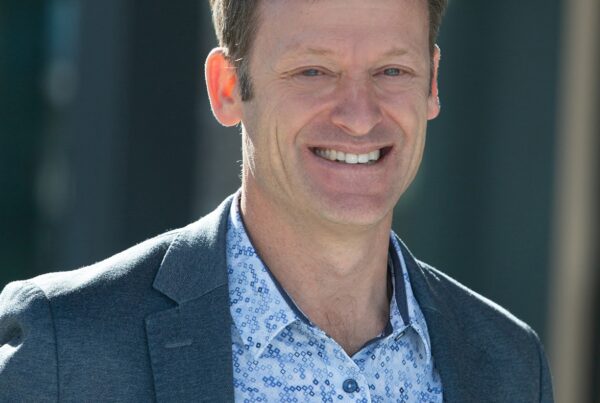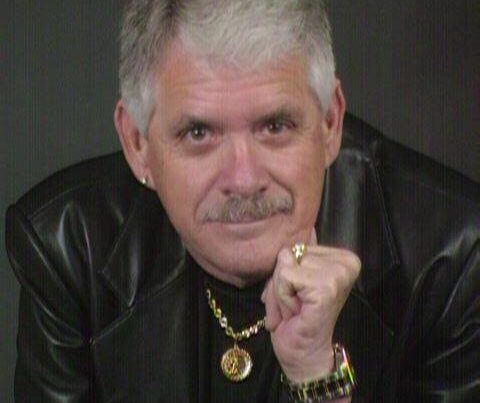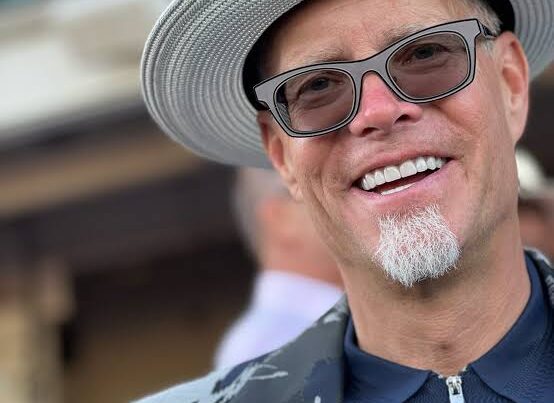Podcast: Play in new window | Download
Subscribe: RSS
Why let your valuable pool of talent go to waste?

James Sinclair
James Sinclair is the Chief Executive and Co-Founder of EnterpriseAlumni, the market leading Alumni and Retiree Engagement Platform.
Their software powers the corporate alumni networks of the world’s largest companies, leveraging this vast untapped pool of people for talent, sales, marketing and community.
He has a background in large enterprise innovation, having worked for companies including IBM, SAP & EDS. Outside of his day job, James contributes to media on the future of work, large enterprise innovation and entrepreneurship.
The Enterprise Alumni Talent Management platform enables organizations to access a qualified pool of former employees ready to return, reducing time-to-fill, increasing time-to-productivity and delivering a 6x boost to organizations recruiting ROI.
What We Discuss with James Sinclair in This Episode
- How he came up with the concept for an employee alumni platform
- Establishing a precedent beginning at the interview
- A different take on employee loyalty
- The value of empathy and mentorship within organizations
- Facilitating value-based relationships with former employees
Transcript Highlights
How did you come up with the idea for an Alumni Talent Management Platform?
I’d love to tell you that a flash of light and unicorn jumped out and I was like, ‘this is my calling’, but that is not the story. I’ve always been in rapid innovation, always looking for white space, and I was focused on large enterprises realizing the power of agility in the cloud. We’ve seen in the last decade that anything is possible. If you can dream it, someone can build it – and fast.
I was introduced to the HR line of business and human resources technology and I was unbelievably underwhelmed. They were talking about concepts that sales teams had been doing for a decade. I remember going to a conference and the big topic was an AI chat bot to help employees. I couldn’t understand why we should be excited because every website on earth has already had one for B2C.
So I was in the HR line of business working with some customers and this topic came up from one of the customers we were talking about. As we started looking, we suddenly saw this enormous white space. And as we thought about the future of work, where it’s going, rescaling and speed of hire, and all the buzz words around recruiting the right person, surely if you kept in touch with your former employees you’d have access to a pre-qualified and re-vetted talent pool. Surely that would be good for the bottom line.
So it started on that premise. That was about three and a half years ago and we’ve been on this journey ever since. Kudos to the customers who helped us built this product and articulate and understand the gap we’re filling.
What do you recommend organizations do to start adopting this concept of Alumni Talent Management?
First, I believe HR teams should have their own engineering squad – an amazing designer, engineer, and prototyper, so that when they dream they can actually see it play out.
If we take where we are right now with COVID and all the layoffs, the reality is that people are leaving jobs sooner – voluntarily or not. No one is staying for life anymore.
So we know that tenure is going down, and we know companies spend an enormous amount of money finding the right candidates, recruiting, training and all that. When they walk out the door, at best they get an edible arrangement.
I hate to call people an asset but you have to in this context. There’s no other asset you invest so heavily in that you would let just fall off the balance sheet. So just from a financial perspective it makes sense to maintain a relationship.
Second, when you bring someone back, you know they’re a good fit, because you know everything about them – cobwebs and all. Both ways – they also know the cobwebs of the company. So they’ll be up to speed faster.
I heard this statistic today – 50% of senior executive recruits end up being bad. Surely bringing back someone who has worked at the company but perhaps wasn’t at that executive level yet, would mitigate that risk somewhat.
So we’re into the concept of, “Let’s just have a relationship. Who knows where it leads.”
My last point on that is a quote I often possibly attribute to the wrong person (the CEO of Starbucks), who said, “When every employee leaves, they are promoted to customer. Therefore every touch point we have with them has to be as we would treat a customer. Anything less than that, and we do not deserve their business.”
We say, “Of course” but to really execute on that is a great example of the new HR leadership of people first.
I think people forget that the first question people ask when they go to a new place is, “Hey, where were you last?” You’re either going to be like, “I was here and I escaped,” or “I was here and it was amazing.”
I think there’s a misunderstanding of loyalty. Employment of someone is a privilege not a right. Companies are starting to realize that. It is a privilege to employ you and I need to work every day to retain that privilege. Also, when they leave, take credit that that person is going to a better job because of the skills, learning and work they accomplished at your organization.
There are a lot of reasons why HR hasn’t driven forward. The risk conversation around HR is different than sales. In sales, it’s “Let’s go! Let’s try it! Let’s see what happens!” Whereas in HR it’s, “Wait a second, we’re talking about people, compliance, regulation and all those things.”
How do you establish this approach to valuing employees from the start?
Understand where your employees need to or want to get to. So in the final stages of the interviewing process, I ask them, “When you leave me in 3 years, where do you think you’re going to work and what will be your job title?”
People are often taken aback because most people don’t have the chance to think about career planning because it just happens. They often don’t take a minute to take stock of their life, where they are, where they’re going, and how they’re going to get to those goals, whether they’re financial, life, family or whatever. But I want them to be thinking about those goals and mapping out their career. I’m not saying it has to be correct. I’m saying, “Ok you’re coming here as an engineer. Do you believe in your next role you might have some head count where you’re going to move into management?”
When you break that weird awkwardness talking about money, employment and where they want to be, you can have the most amazing conversations.
Also nobody’s going ever going walk in to me and say, “Surprise! I’m giving 5 days’ notice.” It’s never going to happen because I’ll be their first supporter.
(Powerful story of mentorship)
I think it’s fundamental to teach people the skills in life and then teach the skills above it. And mentorship comes in many ways.
How does your Enterprise Alumni platform facilitate these types of relationships with former employees?
So you leave an organization, you’re walking out the door, dropping your blackberry in one trash can and your Lenovo laptop in the other; the company can’t come back to you then and say, “Hey, would you like to join our talent community and come back?” What they can say is, “Let’s maintain a relationship. Who knows what tomorrow holds.”
The Alumni Talent Management platform is just that. It starts with, “How might we help you?” It’s very driven to focusing on the end user. Learning, volunteering, mentoring, job, side jobs – all the things that we think different people need. So we have a very contextual platform. An intern would love a side gig, a discount in the marketplace or mentor. A senior executive would love to be an advisor in a startup or be on our speakers’ bureau.
You cannot classify everyone in the same bucket. People have different needs at different times and that’s what our platform focuses on. And if we focus on delivering value to the end user, and we deliver on giving them a great experience, when the company needs them, they’ll be ready. You may call on them to recruit them, refer someone or amplify a job post.
I have a great example of empathy and understanding what it means to have someone promoted from employee to customer. The example is Chili’s and Maggiano’s Little Italy and those restaurants – kind of “America’s first job”. What they talk about in the talent team is the vicious cycle where someone starts there, they do something stupid like go out drinking Friday night and Saturday they forget to wake up and miss their shift. So they do what many first time employees do which is stick their head in the sand, and pretend that that employer, company, and building doesn’t exist, praying they never cross paths again.
But what this company was saying is that we can’t do that. Because the next week that kid’s aunt is going say, “Hey let’s go celebrate my birthday at Chili’s” and that kid is going to be like, “Yeah we can’t go there.”
So I lose one employee because that employee did wrong by us, and now I’m going to lose another 40 customers? We have to teach what it means to pick up the phone and say, “I made a mistake – huge error – how can I make this right?” It’s an example of teaching a soft skill that will be with that person for life.
When we think about post-employment, managing or engaging with former employees, we know this makes sense. The data is overwhelming. Even when you think about adapting to change; companies that can hire quicker will obviously be able to adapt to change quicker. And if we have this pool of people that we know where we’re not going to have to go through this dance, obviously there is a value proposition here.
It starts with delivering value to the end user – the alumni – the former employee – and being of service to them. It’s a hard concept to be of service. It doesn’t always work and it takes time. Many people in their jobs don’t get the option of time. They can’t invest time because they’re going to be out of that job in two years. Why would I invest if I’m going to be promoted and leave in 18 months?
That’s why it has to be a leadership conversation because you need someone who has the long term vision.
How do you implement an alumni platform as a culture shift in a company that so far hasn’t operated that way?
We speak to a lot of customers. 2020 was an amazingly awful year for us. We had a huge wave of new customers, not by their choice. They had huge layoffs and they needed to maintain. So for us, it was a very delicate balancing act. You want to celebrate the wins, but the wins are for all the wrong reasons.
But for many of those companies, this (the shutdown caused by the pandemic) triggered a transformation. So we had companies that said, “We know we have room for improvement and we want to start somewhere.”
We love that. Start somewhere. Let’s just take care of people so when they leave they get a lovely email, “Good luck with your new job.”
We have one customer that implemented a function that, two weeks into your new job, they send you a box of cookies. “Good luck in your new role. We wish you every success. Your team misses you.”
We have another customer in the airline industry that had to lay off thousands of people and he started holding a monthly zoom conference with all the people they had laid off. He did it for two reasons. Number one because he’s a CEO, everyone believes that he knows more than they know. Secondly, business is going to recover. In the meeting I was allowed to join, he said, “Learn new skills now. We’re going to open up our new learning management system. …” By the end of the call, people were almost cheering.
It goes back to trust. It’s the one thing in common for our customers, is their wanting to maintain a level of trust and transparency with their former employees.
Final Thoughts
In terms of transforming culture, it’s like eating an elephant; you do it one step at a time.
There is a wealth of forgiveness in the market right now. Because of what’s happened, you can actually say, “We’re going to try something” and your employees are not going to say, “I can’t believe they haven’t vetted this!”
It’s the same with your customers. I think about the Mandarin Oriental or the Ritz Carlton. Two years ago, if they had sent you an email and said, “Hey we’re trying this new beta thing,” you’d be like, “Really? At $2,000 a night you’re trying a beta thing?” Now, if they sent it, you’d say, “That’s so cool, I can’t wait to be a part of it!”
So if there’s ever a time to change (it’s now). That’s part of our mission. If you don’t realize that being good to people is good for business, then you’re going to have bigger problems.
The relationships vendors have with customers and that people have with each other now is more human. And because it’s more human it forces more trust, empathy and transparency.
Learn more about Enterprise Alumni
- Website: https://www.enterprisealumni.com
- LinkedIn:https://www.linkedin.com/company/3262229
Connect with James Sinclair
LinkedIn: https://www.linkedin.com/in/jdsinclair
Did You Enjoy The Podcast?
If you enjoyed this episode please let us know! 5-star reviews for the Leaders Of Transformation podcast on Apple Podcasts, Spotify, Pandora or Stitcher are greatly appreciated. This helps us reach more purpose-driven entrepreneurs seeking to make a positive impact in the world. Thank you. Together, we make a difference!
Additional Episodes You May Like
- 364: Leveraging Personality Diversity for a More Compassionate Workplace with Dr. Nate Regier
- 327: Sue Salvemini: Leading From Your Kitchen Table
- 326: Safwan Shah: Providing Faster Paycheck Access for American Workers
- 325: Bobby Herrera: Turning Your Struggles Into Stepping Stones
- 280: Darren Virassammy: How To Become A Great Place To Work










